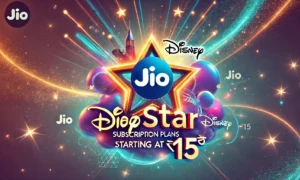Introduction
Tesla, the trailblazer of electric vehicles (EVs) and autonomous driving technology, has consistently revolutionized the automotive industry. Known for its cutting-edge technology, sleek designs, and commitment to sustainability, Tesla has built a devoted customer base. However, the company’s ambitions stretch beyond simply selling cars. In 2024, Tesla is increasingly focusing on a new business model—one that moves beyond traditional car ownership to subscription services for premium car features, such as its Full Self-Driving (FSD) mode, advanced safety features, and infotainment services.
This case study explores Tesla’s strategic pivot toward monetizing in-car features via subscription services, its potential impact on the automotive industry, the benefits to consumers, and the broader implications for the future of mobility. As automakers around the world transition to electric and autonomous vehicles, Tesla’s subscription-based approach to software and feature access could set the tone for how vehicles are perceived and consumed in the coming decades.
The Shift from Traditional Car Ownership to Subscription Models
A New Approach to Car Ownership
Traditionally, the purchase of a car has been a major investment that provides the buyer with permanent ownership of the vehicle and its features. However, the rise of subscription services across various industries—from entertainment (Netflix, Spotify) to software (Microsoft, Adobe)—has caused a shift in consumer expectations. In many sectors, ownership has been replaced by access, and Tesla is now pioneering this trend in the automotive industry.
Tesla’s move towards a subscription model allows consumers to pay for specific car features on an ongoing basis rather than having to purchase the vehicle with all features bundled together. This model aligns with the evolving preferences of modern consumers who value flexibility, lower upfront costs, and a tailored ownership experience.
The Benefits of Subscriptions for Consumers and Tesla
For consumers, the shift to subscription services offers several clear advantages:
- Lower Initial Cost: Traditional car ownership often requires a large upfront payment. With subscription models, customers can access premium features without committing to an expensive upfront cost. This makes high-end technologies, such as Full Self-Driving (FSD), more accessible to a broader audience.
- Flexibility: Customers can choose and pay for the features they need or desire at any given time. For instance, they may choose to subscribe to FSD mode for a month or a year, depending on their requirements, and deactivate the subscription when it is no longer needed.
- Access to New Features: Tesla’s subscription model also enables consumers to access new features and updates over time without needing to buy a new car. This makes Tesla’s vehicles more future-proof, as customers can continue to enjoy new capabilities as software and technology evolve.
For Tesla, the move toward subscriptions offers several benefits:
- Recurring Revenue Stream: Subscription-based services provide Tesla with a predictable and recurring source of revenue. While car sales may fluctuate, subscriptions offer a stable income, which is particularly valuable for Tesla as it continues to grow and expand into new markets.
- Higher Profit Margins: Selling features as subscriptions rather than as part of the car purchase can potentially yield higher profit margins. Many of Tesla’s advanced features, such as FSD, rely on software updates rather than hardware upgrades, enabling the company to generate significant margins on these services.
- Customer Retention and Engagement: Subscriptions create an ongoing relationship between Tesla and its customers. This allows Tesla to better understand its users, build loyalty, and offer targeted services. By continuously updating and improving features, Tesla can maintain customer engagement and satisfaction.
- Innovation and Agility: Tesla’s subscription service model aligns with its broader strategy of constant innovation. By decoupling features from vehicle purchases, Tesla can roll out updates and improvements more rapidly, offering cutting-edge technologies and features in real time.
Tesla’s Subscription Offerings: Full Self-Driving (FSD) Mode and More
Tesla’s most prominent feature available through subscription is Full Self-Driving (FSD) mode, which includes a range of advanced driver assistance features designed to make Tesla vehicles more autonomous over time. Initially available as an upfront package, Tesla introduced the option to subscribe to FSD mode in 2021, giving drivers the flexibility to opt-in to this feature without the significant upfront cost.
Full Self-Driving Mode (FSD)
Tesla’s FSD package is arguably the most advanced driver assistance system available in consumer vehicles. It includes features such as:
- Navigate on Autopilot: This allows the car to navigate highways, change lanes, and take exits autonomously.
- Auto Park: Tesla vehicles can autonomously park themselves in a variety of scenarios.
- Summon: The car can come to the driver on its own, using the key fob or smartphone.
- Autosteer: Tesla vehicles can steer themselves in most driving conditions, including stop-and-go traffic.
- City Street Autonomy: Tesla has been gradually rolling out the ability to navigate complex urban environments autonomously, including making turns at intersections, responding to traffic lights, and negotiating complex roadways.
As Tesla improves its technology and enhances the capabilities of FSD, the subscription model allows drivers to access new features and updates as they become available.
In 2024, Tesla has continued to refine its FSD offering, with the company gradually rolling out Beta versions of the software to selected customers. The company has also introduced new pricing tiers for its FSD package, offering options for consumers to subscribe for different levels of access, from a basic package to a more feature-rich experience.
Additional Features Available via Subscription
While FSD is the flagship offering, Tesla also offers a variety of other features available through its subscription model. These include:
- Premium Connectivity: This service provides enhanced internet capabilities, including live traffic visualizations, music streaming, satellite maps, and video streaming. Premium connectivity is available on a monthly or yearly subscription basis.
- Enhanced Autopilot: Tesla also offers a more limited version of the FSD package called Enhanced Autopilot. This subscription includes features like auto lane change, automatic parking, and Summon, but does not include the full autonomy offered by FSD.
- Tesla Premium Audio: Tesla vehicles are equipped with high-quality audio systems, and owners can opt for enhanced audio experiences via a subscription.
- Battery Range Boost: In certain cases, Tesla offers customers the option to pay for an increase in their vehicle’s battery range for a limited time.
These add-on subscriptions help Tesla further monetize the software capabilities of its vehicles, providing customers with flexibility while enhancing the brand’s ability to offer continuous improvements and new services.
How Tesla’s Subscription Model Works
The mechanics of Tesla’s subscription services are straightforward. Consumers can sign up for a subscription via the Tesla app or in their car’s settings. Once subscribed, the features are activated remotely, and payments are typically billed on a monthly or annual basis. Tesla’s software platform ensures that these subscriptions are easy to manage, with the ability to cancel, upgrade, or modify subscriptions as needed. This seamless integration with Tesla’s existing infrastructure allows the company to deliver new capabilities to customers without requiring physical modifications to the vehicles.
Furthermore, Tesla’s subscription-based model offers a level of flexibility that appeals to a wide range of customers. Those who may not want to commit to the full purchase price of FSD can still benefit from individual features, allowing for a more customized ownership experience. This is especially appealing for customers who may be unsure about the long-term value of specific features like autonomous driving.
The Impact of Tesla’s Subscription Model on the Automotive Industry
Changing the Car Ownership Paradigm
Tesla’s move to offer car features via subscription services is part of a larger shift in the automotive industry. Traditionally, vehicles were sold with a set bundle of features that remained fixed over time. However, as software becomes an increasingly important component of the driving experience, the industry is moving toward a model where vehicles are continuously updated, and customers can access new features as they become available.
The success of Tesla’s subscription model could accelerate this trend, with more automakers considering similar approaches. Companies like General Motors (GM), BMW, and Mercedes-Benz have already started experimenting with subscription-based services, offering features such as heated seats, advanced driver-assist systems, and more. Tesla’s ability to integrate cutting-edge technology with a flexible subscription service has set the stage for other automakers to follow suit.
Financial and Environmental Implications
Tesla’s subscription services not only create a new revenue stream but could also encourage more people to adopt electric vehicles (EVs). As EVs typically have higher upfront costs, the subscription model helps reduce the barrier to entry by allowing consumers to access premium features on a more affordable, flexible basis. This could accelerate the adoption of EVs and Tesla vehicles, contributing to the broader transition to sustainable energy.
Additionally, subscription services for premium features can contribute to greater vehicle longevity. Since vehicles can be continually updated and improved through software, consumers are less likely to need to replace their cars as frequently, leading to fewer vehicles on the road and reducing the environmental impact of manufacturing and disposal.
Consumer Benefits: Flexibility, Personalization, and Innovation
Tesla’s subscription model offers unprecedented levels of flexibility. Customers can tailor their vehicles to meet their changing needs, whether they want access to advanced driving features, premium connectivity, or enhanced battery range. This level of customization is a significant departure from traditional car ownership models, which often force consumers to choose between fixed bundles of features.
Moreover, the subscription model aligns with Tesla’s broader philosophy of continuous improvement. As new updates and features are released, they are seamlessly delivered to customers via software, ensuring that Tesla owners benefit from the latest innovations without needing to purchase a new vehicle.
Challenges and Risks
While Tesla’s subscription-based model offers numerous benefits, it also presents challenges:
- Consumer Resistance: Some customers may be hesitant to embrace subscriptions for features they perceive as essential or may feel that they should own all the capabilities of the car upfront.
- Pricing Sensitivity: Tesla must carefully balance subscription fees to avoid pricing out customers who may find the costs prohibitive, especially in competitive markets.
- Regulatory Hurdles: As the automotive industry moves toward more advanced autonomous driving features, regulatory bodies may impose new safety and compliance requirements that could affect Tesla’s subscription offerings.
- Dependence on Software: Tesla’s business model relies heavily on software updates and cloud-based systems. Any disruption to these services, such as technical failures or cybersecurity issues, could negatively impact the customer experience.
Conclusion
Tesla’s move to offer subscription-based access to premium car features, including Full Self-Driving mode, is a bold step toward reshaping the future of car ownership. By enabling customers to access cutting-edge technologies through flexible subscriptions, Tesla is setting the stage for the next generation of automotive services—where ownership is less about the vehicle itself and more about the access to its features and capabilities.
As the automotive industry evolves, Tesla’s model could serve as a template for how other companies approach software-based car features, and how consumers interact with their vehicles. Whether it’s Full Self-Driving, advanced safety features, or premium infotainment, Tesla’s subscription services offer a glimpse into the future of mobility—one where flexibility, innovation, and customer-centricity are at the forefront.
| Aspect | Impact of Tesla’s Subscription Model |
|---|---|
| Consumer Flexibility | Allows customers to choose and pay for specific features as needed, without large upfront costs. |
| Revenue Generation | Provides Tesla with a predictable, recurring revenue stream from subscriptions for premium features. |
| Continuous Innovation | Customers receive over-the-air software updates, enabling them to access new features without purchasing a new vehicle. |
| Market Differentiation | Sets Tesla apart in the market by offering a seamless and future-proof experience through its subscription services. |
| Industry Trendsetter | Influences other automakers to adopt similar subscription models for features like autonomous driving and safety enhancements. |


